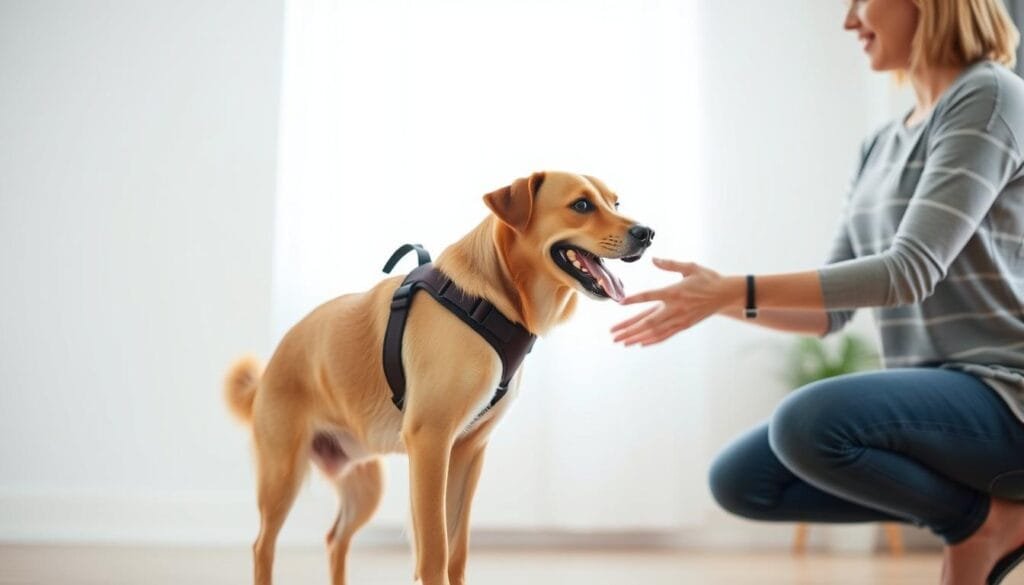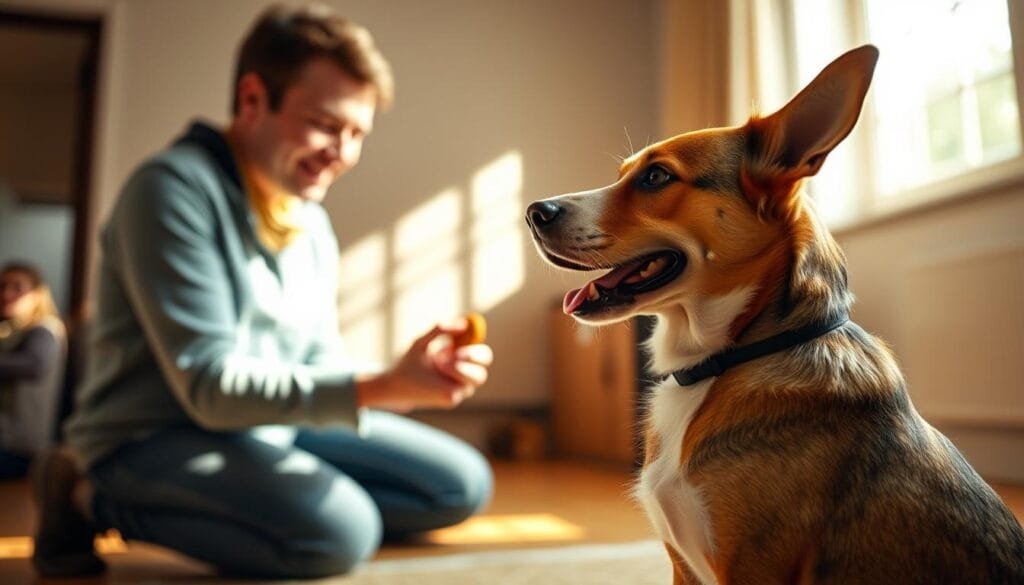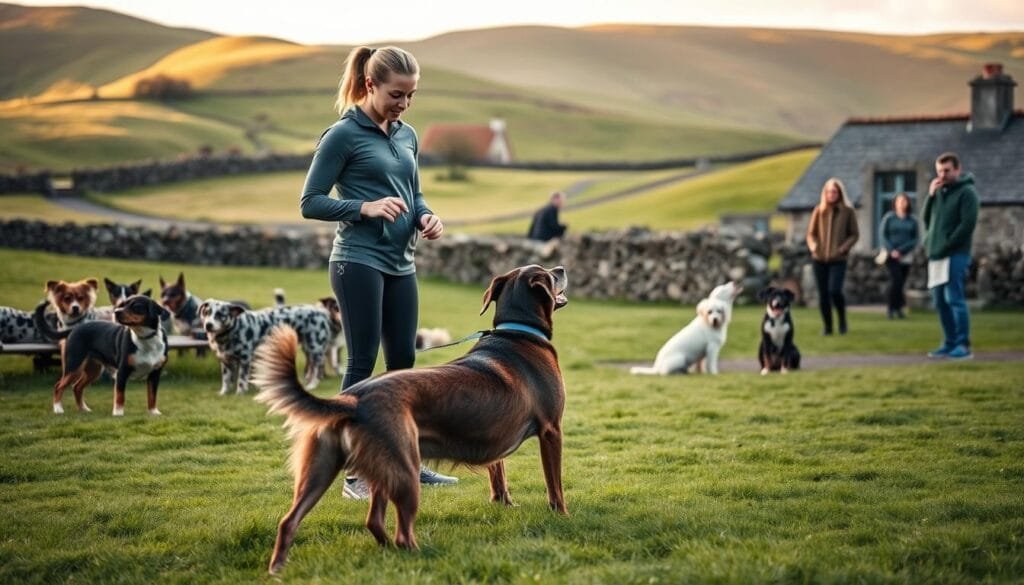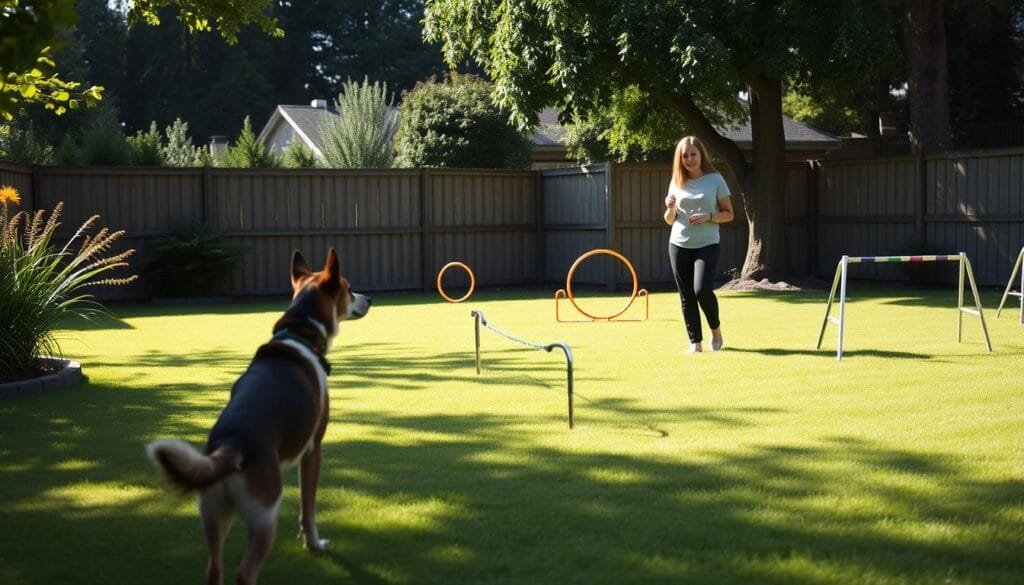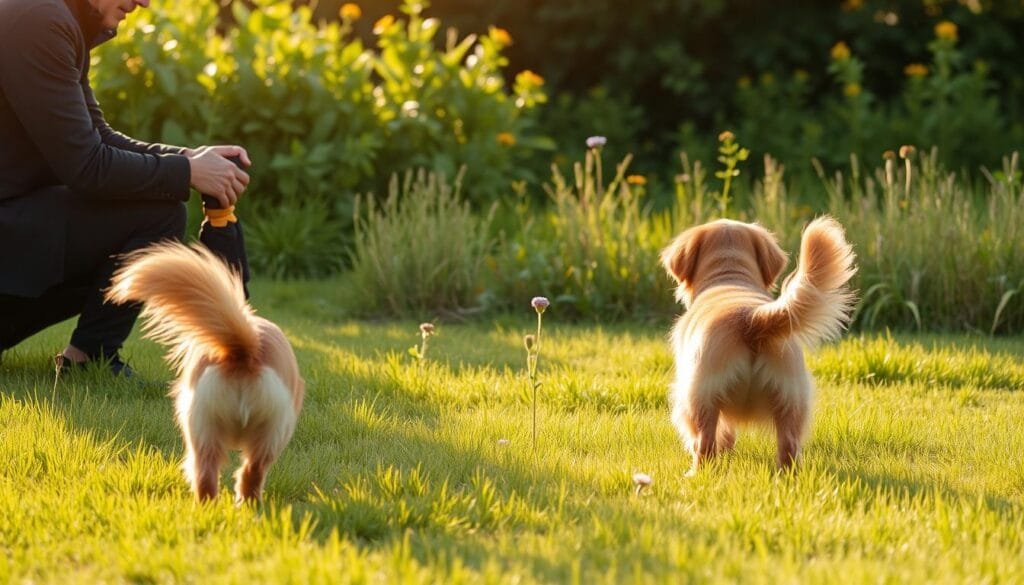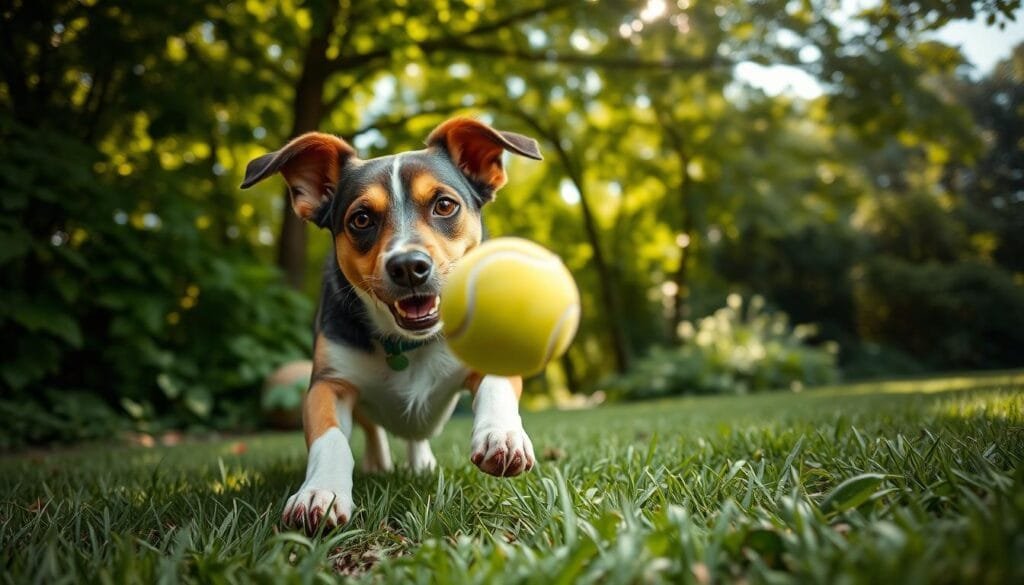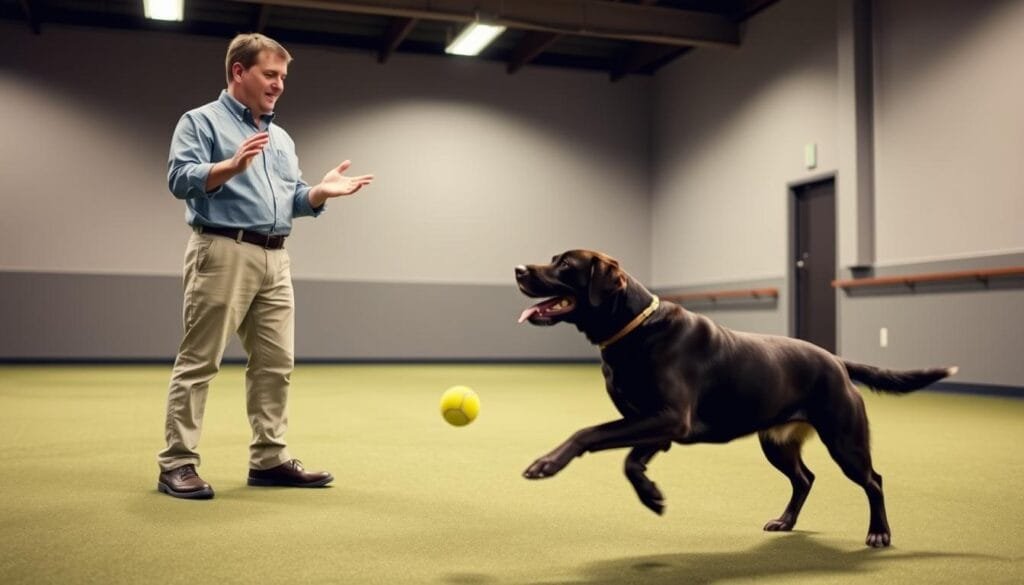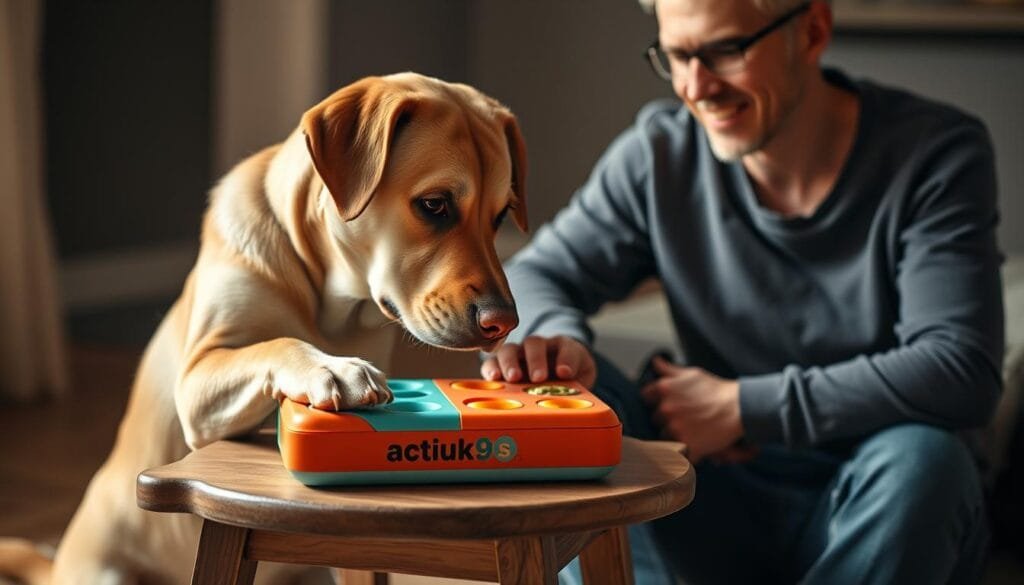Welcoming a rescue dog into your home is a rewarding experience, but it often comes with unique challenges. These dogs may have faced uncertain pasts, making patience and understanding essential. With the right approach, you can help your new pet thrive and become a cherished member of your family.
Trainer Malcolm, with years of experience and a passion for helping rescue dogs, shares his proven methods for success. From establishing boundaries to using positive reinforcement, his guidance ensures a smooth transition for both you and your pet. Consistency and genuine care are key to transforming a shelter dog or rescue puppy into a well-behaved companion.
This article provides step-by-step guidelines and practical advice to help you create a successful training plan. Whether your dog is a puppy or an adult, every pet can learn and adapt with the right support. Let’s explore how you can build a strong bond and a happy future together and learn how to train a rescue puppy or dog.
Key Takeaways
- Patience and understanding are crucial when working with a rescue dog.
- Positive reinforcement encourages good behaviour and builds trust.
- Consistency in training helps your pet feel secure and confident.
- Creating a safe space reduces anxiety and aids adjustment.
- Expert guidance, like that from Trainer Malcolm (089-4120124), ensures effective results.
Understanding the Journey of a Rescue Dog
Rescue dog training life can be transformative, but it requires insight into their unique journey. These dogs often come from uncertain backgrounds, and their time in a shelter can significantly shape their behaviour. Recognising their past and the challenges they face is the first step towards helping them thrive in their new home.
The Impact of Shelter Life on Behaviour
Life in a shelter can leave a lasting mark on a dog’s confidence and behaviour. The constant noise, limited space, and lack of personal attention can make them anxious or withdrawn. For example, many dogs develop nervousness around the door or during their first week in a new environment. Understanding these challenges helps you create a supportive atmosphere.
Research shows that around 70% of dogs in shelters have experienced some form of trauma or neglect. This can manifest in subtle ways, such as fear of strangers or reluctance to explore new spaces. A predictable routine can help them feel secure and gradually build their confidence.
Recognising Past Trauma and Adjustment Needs
Every rescue dog has a unique story, and their adjustment period will vary. Some may settle in quickly, while others need more time to feel comfortable. Issues like excessive barking or destructive habits often stem from past trauma. Addressing these requires patience and a measured approach.
“Understanding a dog’s past is the foundation of effective training. It’s not just about teaching commands; it’s about building trust.”
Creating a safe space and establishing clear boundaries are essential. For instance, introducing a crate as a retreat can help them feel secure. Recognising subtle behavioural cues, such as hesitation or over-excitement, allows you to tailor your approach to their needs.
| Common Challenges |
Recommended Solutions |
| Nervousness at the door |
Gradual exposure, positive reinforcement |
| Destructive habits |
Provide chew toys, increase exercise |
| Separation anxiety |
Short departures, calming aids |
By acknowledging their past and providing a structured environment, you can help your rescue dog transition smoothly into their new life. Each step you take strengthens your bond and sets the stage for a happy future together.
Preparing Your Home for a Rescue Dog
Your home plays a vital role in helping your rescue dog feel safe and secure. A well-prepared environment ensures a smooth transition and builds trust between you and your new pet. By taking the time to dog-proof your space and gather essential supplies, you create a foundation for a positive adjustment period.
https://www.youtube.com/watch?v=PI5W2Stv0Ik
Dog-Proofing and Creating a Safe Space
Dog-proofing your house is the first step towards ensuring your pet’s safety. Secure hazardous items like cleaning supplies, electrical cords, and small objects that could be swallowed. Designating a specific space, such as a cosy corner with a bed or crate, helps your dog feel secure and reduces anxiety.
Effective use of available spaces can promote safety and comfort. For example, baby gates can restrict access to certain areas, while chew toys and interactive puzzles keep your pet entertained. A clean, confined space is particularly beneficial during the initial adjustment phase.
Essential Supplies for a New Home
Gathering the right supplies is crucial for your dog’s comfort and well-being. Start with basics like a sturdy bed, food and water bowls, and high-quality food. Toys, such as chew toys and interactive puzzles, provide mental stimulation and create positive associations with their new home.
Here’s a quick checklist of essential items:
- Bed or crate: A comfortable retreat for your pet.
- Food and water bowls: Durable and easy to clean.
- Toys: Chew toys and interactive puzzles for mental stimulation.
- Leash and collar: For safe walks and identification.
By preparing your home thoughtfully, you reassure both your dog and your family, paving the way for a stress-free transition and a happy future together.
How to train a rescue dog: Building Trust Through Positive Reinforcement
Building trust with a rescue dog starts with understanding their unique needs. These pets often come from challenging backgrounds, making patience and consistency essential. By setting clear boundaries and using positive reinforcement, you can create a strong bond and help them feel secure in their new environment.
Establishing Immediate Boundaries
From the first day, it’s important to establish boundaries. This helps your pet understand what’s expected and reduces anxiety. For example, designate specific areas for eating, sleeping, and playing. Consistency in these rules provides a sense of stability.
Trainer Malcolm emphasises,
“Clear boundaries from the start make it easier for your pet to adjust. It’s not about being strict; it’s about creating a safe and predictable environment.”
Using Praise, Treats, and Patience
Positive reinforcement is a powerful way to build trust. Reward good behaviour with treats and verbal praise. This encourages your pet to repeat those actions. Short, frequent training sessions are more effective than long ones, keeping your pet engaged and motivated.
Here are some practical tips to reinforce good behaviour:
- Use high-value treats like boiled chicken for better focus.
- Pair treats with verbal praise to strengthen the association.
- Keep sessions under 10 minutes to avoid frustration.
Remember, every thing you teach should be reinforced consistently until it becomes second nature. Patience is key, especially with pets who may have experienced trauma in the past.
Establishing a Consistent Routine and Structure
Creating a consistent routine is one of the most effective ways to help your new pet settle into their home. Predictable schedules provide stability, which is especially important for dogs with uncertain pasts. By allocating specific time for meals, walks, and training, you create a sense of security that boosts their confidence.
Implementing Predictable Daily Schedules
A structured day benefits both your pet and your family. Start by setting regular feeding times, as this helps regulate their digestion and reduces anxiety. Studies show that 70% of dogs exhibit improved behaviour when following a consistent feeding schedule.
Incorporate daily walks and playtime to keep your pet physically and mentally stimulated. Dogs typically need 1-2 hours of activity each day to stay healthy and happy. A well-planned routine ensures they know what to expect, reducing stress and promoting calmness.
The Benefits of Routine for Confidence
Consistency in daily activities strengthens the relationship between you and your pet. Even a simple thing, like feeding at the same time each week, can make a big difference. Dogs thrive on predictability, and a structured environment helps them feel safe and secure.
Trainer Malcolm advises,
“A consistent routine builds trust and helps your pet adapt to their new life. It’s about creating a stable foundation for their future.”
By establishing a reliable schedule, you provide your new dog with the stability they need to thrive. This approach not only improves their confidence but also enhances your bond, setting the stage for a happy and harmonious experience together.
Implementing Effective Crate Training
Crate training offers a structured approach to helping your pet feel secure and confident. When done with care, it becomes a valuable tool in dog training, providing a safe retreat and aiding in housebreaking. The key is to ensure the crate is a positive space, not a place of punishment.
Selecting the Right Crate for Comfort
Choosing the right crate is essential for your pet’s comfort. The crate should allow your pet to stand fully, turn around, and lie down easily. A crate that’s too small can feel restrictive, while one that’s too large may hinder housebreaking efforts.
Here’s what to consider when selecting a crate:
- Size: Ensure it’s proportionate to your pet’s size.
- Material: Opt for durable, easy-to-clean options like metal or plastic.
- Ventilation: Good airflow keeps your pet comfortable.
Turning Crate Time into a Positive Experience
Introducing the crate gradually is crucial. Start by placing it in a quiet area and leaving the door open. Encourage your pet to explore it by placing treats or toys inside. This creates positive associations with the crate.
Short, supervised sessions help your pet adjust. Begin with 5-10 minutes and gradually increase the duration. Pair crate time with activities like a walk or playtime to reinforce it as part of their routine.
Trainer Malcolm advises,
“Patience and consistency are key. Make the crate a safe haven, not a place of isolation.”
| Common Mistakes |
Solutions |
| Forcing the pet into the crate |
Use treats and encouragement to guide them in. |
| Leaving the pet for too long |
Start with short sessions and gradually increase time. |
| Using the crate as punishment |
Ensure it’s always associated with positive experiences. |
By following these steps, you can make crate training a rewarding experience for both you and your pet. It’s a process that requires patience, but the benefits are well worth the effort.
Tackling Common Behavioural Challenges
Addressing behavioural issues in rescue dogs is essential for a harmonious relationship. These pets often come from uncertain backgrounds, which can lead to anxiety, excessive barking, or destructive habits. Understanding the root cause of these behaviours is the first step towards finding effective solutions.
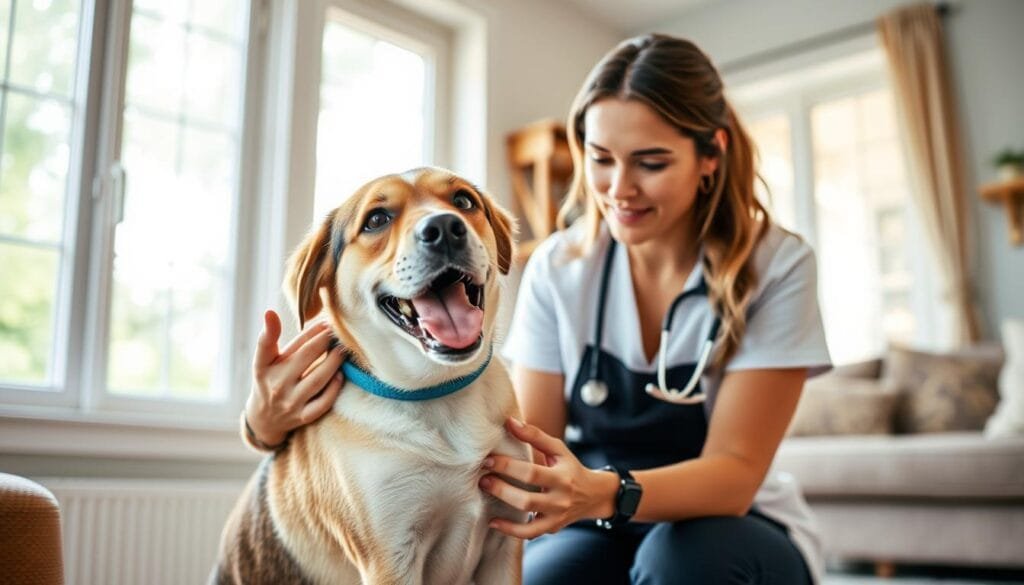
Managing Anxiety, Excessive Barking and Destructive Habits
Managing anxiety in dogs, particularly rescue dogs, requires a nuanced understanding of their background and individual needs. Many rescue dogs come with a history of trauma or instability, making them more prone to anxiety-related behaviors such as excessive barking and destructive habits.
These symptoms often arise as a way for the dog to cope with their stress or fear. Understanding this can facilitate a more compassionate approach to behavior management, allowing owners to create a safe environment where their furry companions can gradually learn to feel secure.
Excessive barking in rescue dogs often stems from anxiety, be it from separation, unfamiliar environments, or social situations. To help manage this behavior, it is essential to identify the triggers that cause anxiety. Keeping a consistent routine can greatly benefit these dogs; predictability offers comfort and security, helping to minimize their barking.
Furthermore, positive reinforcement training can be useful. Rewarding quiet behavior with treats, praise, or playtime can encourage a dog to remain calm, ultimately teaching them that silence leads to positive outcomes.
In addition to barking, many rescue dogs express their anxiety through destructive habits, such as chewing on furniture or digging. These behaviors are often a sign of boredom, frustration, or a lack of mental stimulation.
Providing a variety of toys, regular exercise, and engaging in interactive activities can keep a dog’s mind occupied and reduce the likelihood of destructive behavior. Puzzle toys or treat-dispensing games can be particularly effective in channeling their energy in a productive way.
Ultimately, patience and understanding are key when managing anxiety in rescue dogs. Owners should remember that progress may be slow, and each dog will respond differently to various strategies.
Seeking guidance from a professional dog trainer or a behaviorist can provide tailored strategies for managing excessive barking and destructive habits, leading to a happier and healthier relationship with their beloved pet. By committing to a thoughtful approach, caregivers can help rescue dogs not only overcome their anxiety but also thrive in their forever homes.
Anxiety is a common issue among rescue dogs, often stemming from past trauma or lack of stability. Signs include excessive barking, pacing, or destructive chewing. Creating a calm environment and using tools like calming aids can help reduce stress.
For excessive barking, identify triggers such as loud noises or unfamiliar visitors. Redirect their attention with toys or treats, and reward calm behaviour. Destructive habits, like chewing furniture, can be managed by providing appropriate chew toys and increasing physical activity.
Strategies for Overcoming Fear and Resource Guarding
Fear and resource guarding are behaviours that require a gentle yet firm approach. Fearful dogs may cower or growl when approached, while resource guarding involves protecting food or toys. Understanding your pet’s triggers is key to addressing these problems.
Trainer Malcolm advises,
“Patience and consistency are crucial. Gradually expose your pet to their fears in a controlled way, and always reward positive behaviour.”
For resource guarding, teach your dog to associate your presence with positive outcomes, such as offering a treat when you approach their food bowl.
Using a proper leash technique during walks can also mitigate unwanted behaviours. A well-fitted harness and calm handling help your pet feel secure. Regular walks not only provide exercise but also strengthen your bond.
Finding the right way to address these challenges is essential for long-term success. By understanding your dog’s needs and responding with patience, you can transform behavioural challenges into opportunities for growth and trust.
Socialisation Strategies for a New Dog
Helping your new dog adjust to unfamiliar surroundings requires patience and a thoughtful approach. Socialisation is crucial for building their confidence and ensuring they feel secure in their new environment. By gradually introducing them to new experiences, you can create a positive foundation for their development.
Introducing Your Dog to New Environments and People
Start by exposing your pet to different environments at a comfortable pace. Begin with quiet areas and gradually introduce busier settings. This helps them feel less overwhelmed and more confident. For example, a short walk around the neighbourhood can familiarise them with their surroundings.
When meeting new people, ensure the interactions are calm and controlled. Allow your dog to approach at their own pace, and use treats to create positive associations. This approach is especially helpful for rescue dogs who may feel anxious around strangers.
Regular walks are an excellent way to socialise your pet. They provide opportunities to explore new sights, sounds, and smells. Keep the walks short initially, gradually increasing the duration as your dog becomes more comfortable.
Controlled social interactions benefit both your pet and you. They help your dog learn appropriate behaviour while strengthening your bond. Observing your pet’s body language is essential to ensure they’re ready for more challenging scenarios.
Here are some practical tips for successful socialisation:
- Use positive reinforcement: Reward calm behaviour with treats and praise.
- Start small: Introduce one new thing at a time to avoid overwhelming your pet.
- Be patient: Even a young puppy needs time to adjust to new experiences.
One thing that can make the process smoother is gentle, gradual exposure. Rushing can lead to stress, while a measured approach ensures your dog feels safe and supported.
| Common Socialisation Challenges |
Solutions |
| Fear of new environments |
Gradual exposure, positive reinforcement |
| Anxiety around people |
Controlled introductions, treats |
| Overexcitement during walks |
Short, structured walks, calm handling |
By following these strategies, you can help your new dog adjust to their surroundings with confidence. Socialisation is a gradual process, but the rewards are well worth the effort.
Expert Advice from Trainer Malcolm
Working with a rescue dog can be incredibly rewarding, but it often requires expert guidance to navigate behavioural challenges. Trainer Malcolm, with over a decade of experience, specialises in helping rescue dogs adjust to their new lives. His proven methods focus on building trust and creating a stable environment for your pet.

When to Seek Professional Help: Call 089-4120124
Recognising when to seek professional help is crucial for your pet’s well-being. If your dog shows signs of anxiety, aggression, or persistent behavioural issues, it’s time to consult an expert. Trainer Malcolm’s sessions are designed to address these challenges effectively.
Here are some situations where professional intervention is recommended:
- Aggressive behaviour: Growling, snapping, or resource guarding.
- Excessive anxiety: Constant barking, pacing, or destructive habits.
- Difficulty adjusting: Struggles with basic commands or socialisation.
“Every dog is unique, and understanding their needs is the first step towards success. Professional guidance can make all the difference.”
For immediate assistance, call Trainer Malcolm at 089-4120124. His tailored sessions focus on resetting training routines and addressing specific issues. Even experienced dog shelters recommend his expertise for a smoother transition.
Creating a stable dog home is essential for your pet’s confidence. A well-planned session with a professional can help you establish routines and boundaries that foster a positive environment. Regular communication with a trainer ensures ongoing support for both you and your pet.
Practical tips for maintaining progress include:
- Consistently applying techniques learned during sessions.
- Monitoring your pet’s behaviour for signs of improvement or regression.
- Addressing specific challenges, such as issues at the door, with professional advice.
Every owner should feel supported in their journey with a rescue dog. With the right guidance, you can create a harmonious relationship and a happy future together.
Utilising High-Value Treats and Rewards
High-value treats are a game-changer in motivating your pet during training. These rewards not only encourage good behaviour but also strengthen the bond between you and your furry friend. Choosing the right treat can make all the difference in how quickly your pet learns and retains new skills.
Choosing the Best Dog Treats for Training
When selecting treats, opt for high-quality food items that are both healthy and appealing. Small, pea-sized pieces work best for most pets, ensuring they’re easy to consume without disrupting the flow of your session. High-value options like cooked chicken or cheese are particularly effective for challenging tasks.
Here’s a quick tip: Rotate between different treats to keep your pet interested. This prevents boredom and maintains their focus during training. Always ensure treats make up no more than 10% of your pet’s daily caloric intake to avoid overfeeding.
Keeping Training Sessions Short and Effective
Short, frequent sessions are more effective than long, drawn-out ones. Aim for 5-10 minutes per session, keeping your pet engaged and motivated. This approach helps prevent frustration and ensures your pet retains what they’ve learned.
Trainer Malcolm advises,
“Consistency and patience are key. Reward your pet immediately after they perform the desired behaviour to reinforce the connection.”
By structuring your dog training in this way, you create a positive and enjoyable experience for both you and your pet. Even a simple train dog approach can yield impressive results when done correctly.
Conclusion
Every day with your rescue pet is an opportunity to build trust and confidence. Starting early with a structured routine helps them feel secure in their dog home. Consistency in feeding, walks, and training sessions creates a stable environment that fosters growth.
Using high-value treats during sessions reinforces positive behaviour and strengthens your relationship. Remember, patience is essential, especially when addressing past problems. Over time, these efforts lead to a lasting bond between you and your pet.
Involve your family in the process to create a cohesive effort. If challenges arise, don’t hesitate to seek professional help dog deserves. With dedication and care, your new dog will thrive in their weeks and months ahead.
FAQ
How does shelter life affect a rescue dog’s behaviour?
Shelter life can create stress and uncertainty, leading to anxiety or fear. Your new pet may need time to adjust to a calmer, more predictable environment.
What supplies are essential when bringing a rescue dog home?
Essentials include a comfortable bed, food and water bowls, high-quality food, a leash, collar, ID tag, and toys. A crate can also help create a safe space.
How can I build trust with my rescue dog?
Use positive reinforcement, such as treats and praise, to reward good behaviour. Be patient and consistent, allowing your dog to feel secure in their new surroundings.
Why is routine important for a rescue dog?
A consistent daily schedule helps reduce anxiety and builds confidence. Regular feeding, walking, and playtimes create a sense of stability.
How do I make crate training a positive experience?
Choose a crate that’s the right size and make it cosy with blankets and toys. Use treats and praise to encourage your dog to enter willingly.
What are effective strategies for managing anxiety in rescue dogs?
Gradual exposure to new experiences, calming aids like pheromone diffusers, and plenty of patience can help ease anxiety. Professional guidance may also be beneficial.
How should I introduce my rescue dog to new people and environments?
Start slowly, allowing your dog to explore at their own pace. Use treats and positive reinforcement to create positive associations with new experiences.
When should I seek professional help for my rescue dog?
If behavioural issues persist or worsen, consult a professional trainer like Malcolm. Call 089-4120124 for expert advice tailored to your dog’s needs.
What are the best treats to use during training sessions?
High-value treats, such as small pieces of chicken or cheese, work well. Keep sessions short and engaging to maintain your dog’s focus
Source Links









